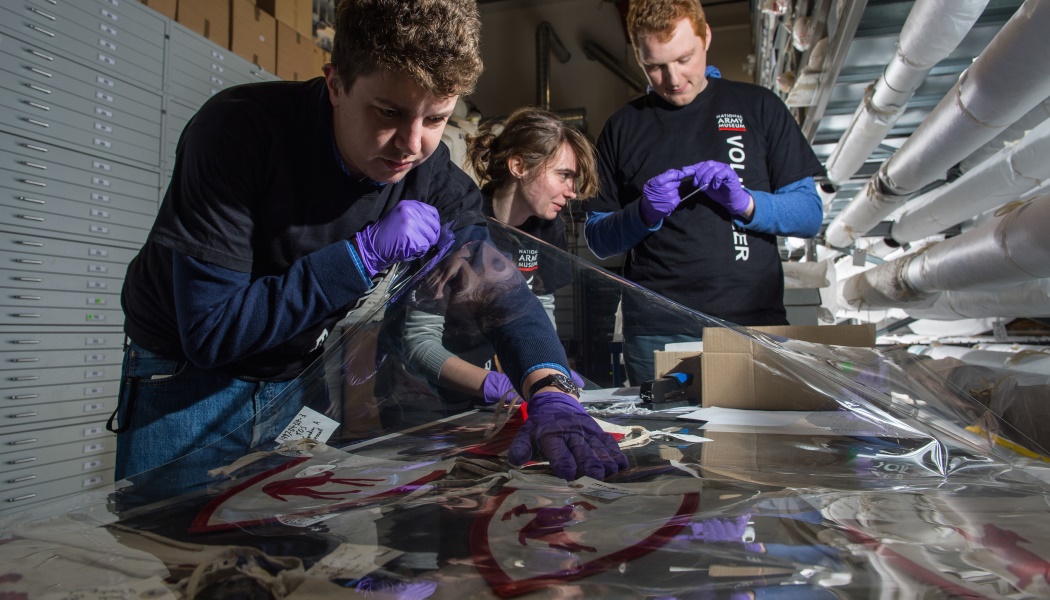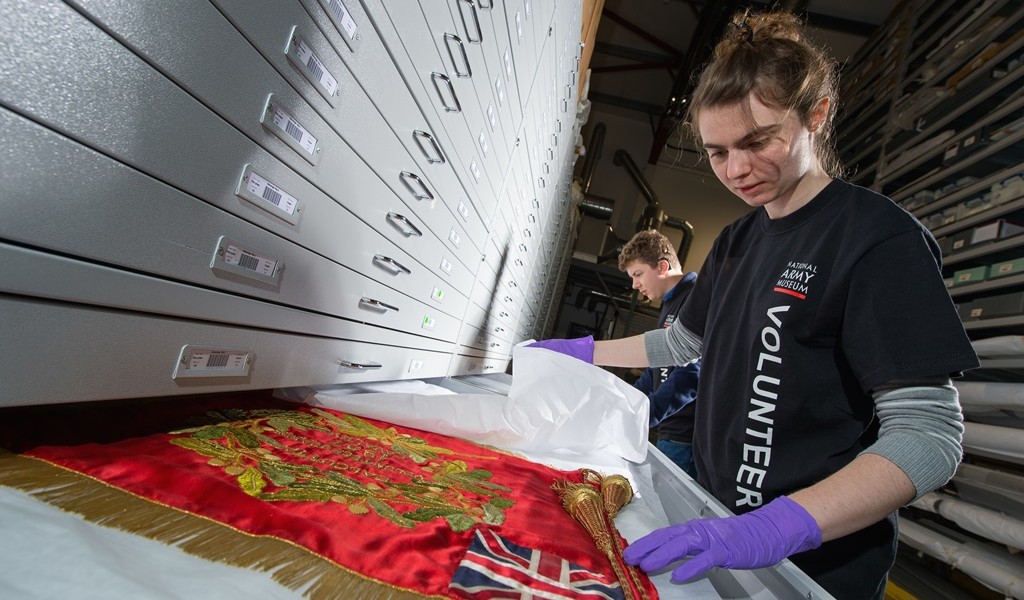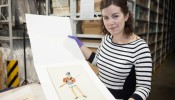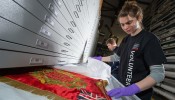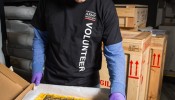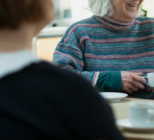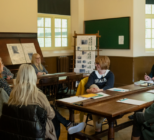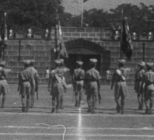The £11.4m HLF supported project will bring a radical transformation of NAM’s building as well as its off-site and online audiences through a programme of redevelopment and outreach activities with volunteers proving to be a vital asset in its plans. NAM’s first volunteering project in 2011 involved 15 volunteers assisting curators with the remedial conservation, packing and movement of collections from the Royal Military Academy (Sandhurst) to purpose built storage facilities in Stevenage, North London.
Since then, the volunteering programme has continued to grow and diversify, and volunteers, in their hundreds, and from a range of backgrounds, have contributed over 24,500 hours to NAM at significant added value, with mutual benefit. In November NAM was awarded Investing in the Volunteers Quality Standard Award by the UK Volunteering Forum.
“Volunteers help to improve both NAM’s capacity and diversity in terms of individuals and the work they carry out, bringing new skills and knowledge to the Museum and the sector,” says Teresa Scott Assistant Director Human Resources.
Today, almost 60 volunteers participate in a wide range of museum activities at any one time, working in collections care and management, access and outreach, learning, research, development fundraising, marketing and communications, human resources, finance and digital and technology.
“The volunteering programme helps volunteers in a number of ways, depending on an individual’s motivations for volunteering,” says Scott. “Volunteers gain new skills in a Museum and heritage environment enabling them to get a foot on the career ladder, which often leads to paid employment, and it helps others to regain basic skills and build their self-confidence.”
In addition, Volunteers Supervisors roles have been established to ensure that the programme is fully supported and integrated into the Museum for long-term sustainability. These roles are undertaken by volunteers, have been tested during the development phase of the relaunch project and are overseen by Scott to ensure professional management of the volunteers and the volunteering programme.
Volunteering has become embedded into the Museum’s business planning process and overall strategy, and is established as a core activity. “Volunteers enable NAM to achieve more, both on a regular basis and through a number of discreet projects. Volunteers can also act as advocates and help NAM connect with new audiences for the purpose of outreach,” he says. “The Museum has continuously strived to grow its volunteering programme, and by early 2017, we aim to have further increased the number of volunteers participating in activities across the entire Museum spectrum.”
Many of the museum’s volunteers have been successful in securing paid roles both at NAM, and within other organisations, as a direct result of their time volunteering at NAM. Others have gained confidence in a social environment, or have gained entry to further/higher education. “With a high satisfaction rate, all of our volunteers have developed in some way, many learning new skills within a professional Museum environment.” One volunteer who has found success at NAM is Rebecca Newell, 29, who began volunteering at NAM four years ago. Newell began volunteering during her first year at university and worked across 15 volunteering roles throughout her BA and MA. Although these roles were all within the arts and cultural sectors, the varied tasks and sizes of organisations helped her understand a little more about what type of role she would eventually like to do.
Her volunteering life began at the Wallace Collection, working with fine art followed by the V&A and a spell at the Barbican. It was during this time that Newell learnt that she most enjoyed collections care and exhibition development work.
It was during her first year of volunteering that Rebecca decided she wanted to move towards museum curating. After a number of further placements she realised that she wanted to be exposed to a larger range of objects and so applied for a placement at the NAM.
“I always went to my volunteer interviews armed with a check list and availability schedule. It’s about selling yourself, even if you haven’t had experience before, talk about your interests and why you’d be good for the role, also what you are hoping to get out of your time there. For most organisations volunteers are incredibly important. With this in mind it’s well worth keeping an eye out for well supported and developed training development programmes.”
In December Newell was awarded £60,000 by the Art Fund through the second round of its New Collecting Awards to build a collection of contemporary art that explores hidden histories in the British Army. Newell plans to further develop the National Army Museum into a 21st-century museum that fully engages with the broad content of its collections. By gathering artistic responses to the British Army, she wants to address interpretive ‘gaps’ through collecting. In doing so, she hopes to ask questions that curators alone cannot – about gender, diversity, LGBT issues, adaptability and discrimination.
- If you have volunteers that deserve recognition apply for the Museums + Heritage Awards for Excellence Volunteers of the Year Award – deadline 29 February.
NAM volunteer strategy
- Continuously develop and maintain relationships with local volunteer centers, charities, rehabilitation organizations, community groups and higher education authorities for the purpose of attracting a diverse range of applicants.
- Remove or minimize barriers to volunteering, including the requirement for qualifications/graduate status, and continuing to reimburse out-of-pocket expenses.
- Regularly review recruitment procedures and advertising campaigns to ensure a diverse range of volunteers (age, social background interests, gender, ethnicity), specifically looking at recruiting more people in the upper age ranges and more non-professionals/graduates.
- Offer taster sessions and opportunities that cover a wide range of time commitments.
- Collaborate with partners to establish a wider choice of roles across different organizations.
- Encourage existing volunteers to become champions, talking about their own volunteering experiences and providing quotes, and taking on supervisory roles.
- Continuously develop recruitment and evaluation processes, management structures and staff training and development to ensure sufficient supervision and support of all volunteers.
- Retain and develop Volunteer Supervisor roles with experience of Human Resources and managing volunteer teams.
- Ensure a culture that welcomes all volunteers, through the inclusion of volunteering into Museum policies and processes, and regularly seeking feedback from volunteers and supervisors.
- Offer a wide range of meaningful volunteering roles and develop roles that are representative of different Museum specialisms.
- Establish short and longer-term projects, and develop a pool/network of volunteers.
- Ensure that volunteering is strategically planned for long-term sustainability, enabling volunteers’ roles to evolve as Museum projects and activities progress.
- Recognize volunteers’ expectations and motivations for volunteering and ensure that these are met.

